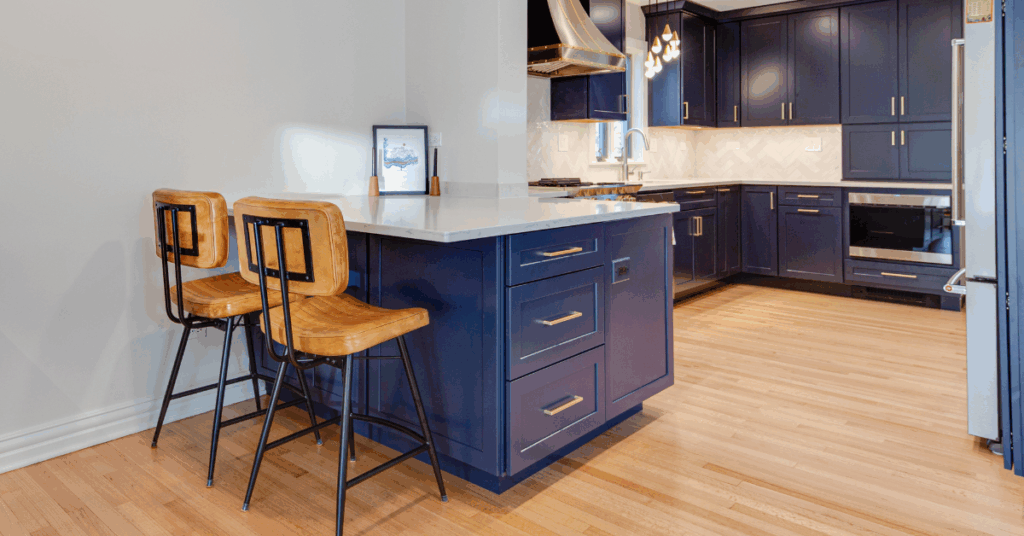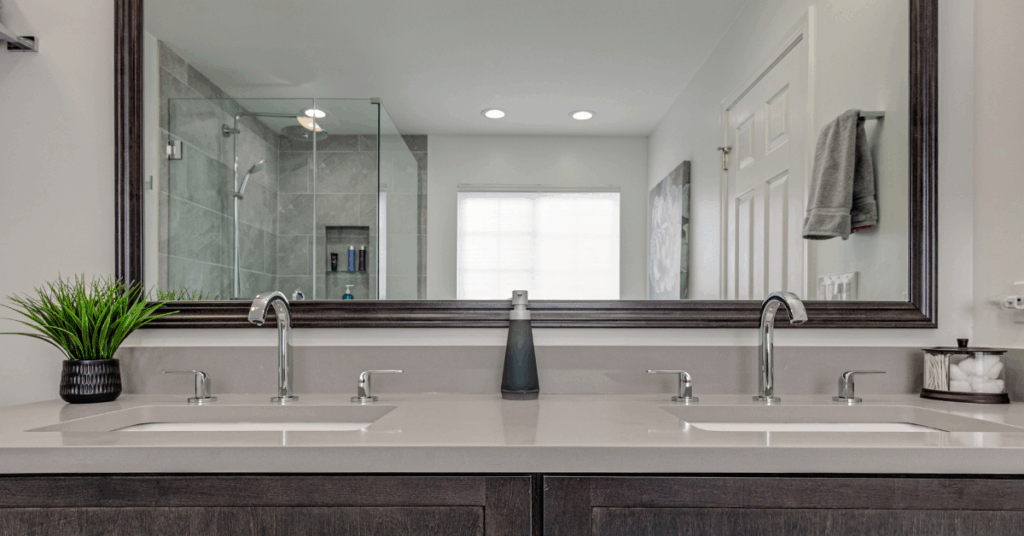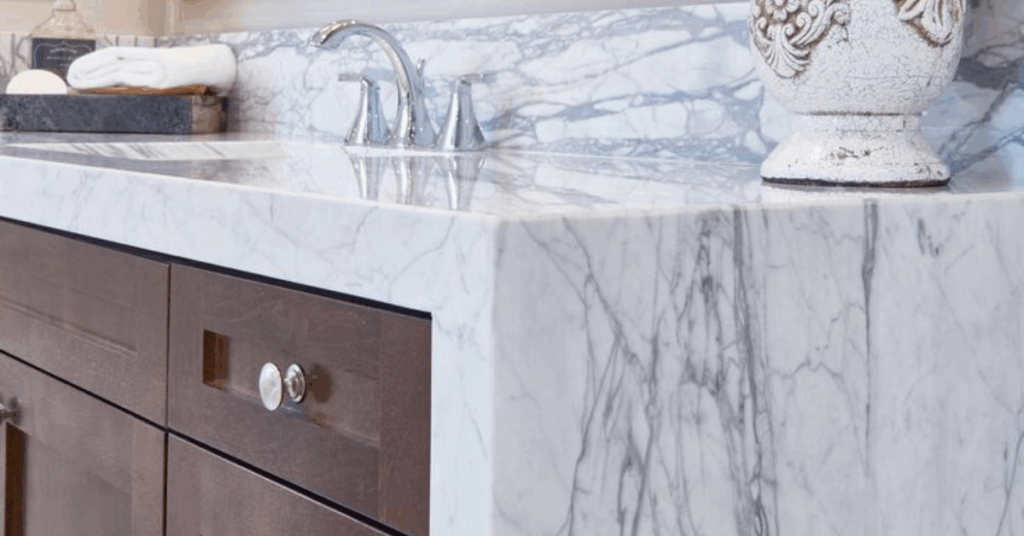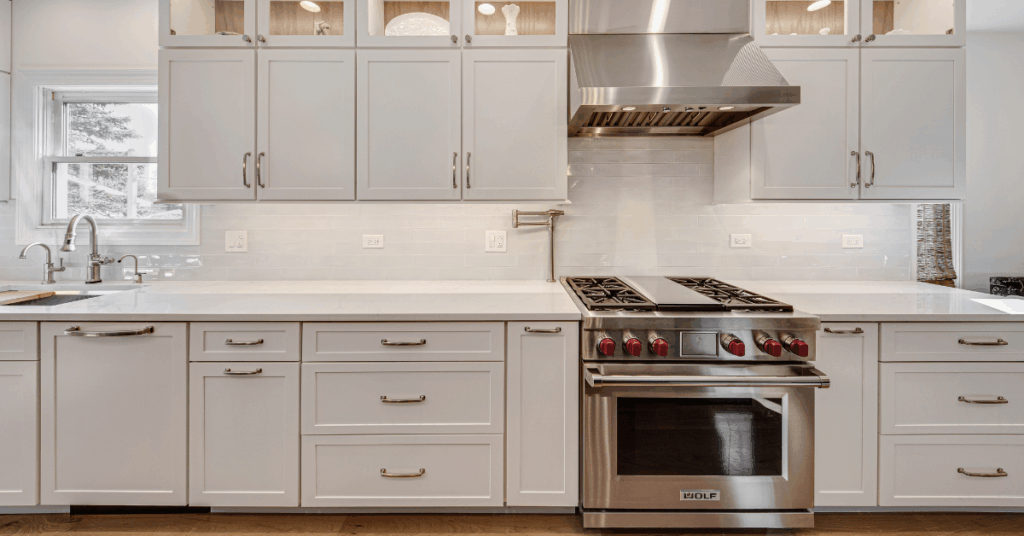Countertop Thickness: 2cm vs. 3cm

When choosing new countertops, most homeowners focus on material, color, or edge style—but countertop thickness is one of the most important decisions you’ll make. From stability and durability to cost, installation requirements, and overall design impact, the thickness you choose will influence both the performance and appearance of your new countertops for years to come.
Whether you’re replacing dated surfaces, upgrading to a luxury look, or designing a new kitchen from scratch, this guide breaks down everything you need to know about 2cm, 3cm, and mitered edges—including when to choose each option, how they’re used in modern design, and how Masters Countertops ensures flawless fabrication and installation every time.
This blog is designed to be educational, practical, and SEO-friendly—perfect for homeowners searching phrases like:
- 2cm vs. 3cm countertops
- best countertop thickness for kitchens
- quartz thickness comparison
- granite countertop thickness guide
Let’s dive in.
Why Countertop Thickness is Important
Countertop thickness doesn’t just change the look of your kitchen or bathroom—it affects:
- Durability
- Structural strength
- Seam visibility
- Edge style options
- Installation process
- Overall cost
- Design aesthetic
Thicker surfaces create a bold, modern look, while thinner slabs work beautifully for sleek or budget-friendly designs. Understanding your options helps ensure you get the right thickness for both style and performance.

Standard Countertop Thickness Options
2cm Countertops (Approx. ¾ Inch)
A 2cm slab is the thinner, lighter option commonly used in:
- Vanities
- Laundry rooms
- Backsplashes
- Budget-friendly kitchen remodels
- European modern-style kitchens (sleek, minimal)
2cm slabs require additional support in kitchen applications because of their thinner profile.
Pros of 2cm Countertops
✔ More budget-friendly
✔ Lightweight, meaning easier to handle
✔ Great for vertical applications (backsplashes, shower walls)
✔ Perfect for modern or minimalist aesthetics
✔ Often used for prefabricated countertops with built-in edges
Cons of 2cm Countertops
✘ Requires plywood support in kitchens to prevent cracking
✘ Limited edge profiles
✘ More fragile during transport
✘ Less substantial appearance
Best Uses
- Guest bathrooms
- Laundry rooms
- Wall cladding
- Tight budgets
- Modern, sleek kitchen designs
Not Ideal For
- Heavy-use kitchens
- Areas with large overhangs
- High-traffic islands
- Outdoors (depending on material)
3cm Countertops (Approx. 1¼ Inches)
The most popular countertop thickness in the United States. Masters Countertops fabricates the majority of our quartz, granite, quartzite, and marble installs in 3cm, because it offers the best balance of strength and aesthetics.
Pros of 3cm Countertops
✔ Stronger and more durable—no plywood needed
✔ Can handle standard overhangs without extra support
✔ More edge profile options
✔ Ideal for busy kitchens
✔ More substantial and luxury-looking
✔ Longer lifespan with fewer risks of cracking
Cons of 3cm Countertops
✘ Slightly higher material cost
✘ Heavier—requires experienced installers
Best Uses
- High-traffic kitchens
- Large islands
- Outdoor kitchens (depending on material)
- Homes with long-term ROI goals
- Any project where durability matters
Most Popular Materials in 3cm
- Quartz (most common)
- Granite
- Quartzite
- Marble
Masters Countertops carries a large selection of in-stock granite and quartz slabs in 3cm, with competitive pricing and fast turnaround.
Mitered Countertops (2cm or 3cm + Seam)
A mitered edge is created by joining two pieces of stone at a 45° angle to form the appearance of a thick, continuous slab—often 2 inches, 3 inches, or even thicker.
This is the go-to choice for luxury kitchens seeking a bold, architectural island.
What a Mitered Edge Achieves
✔ The look of a super-thick slab without the weight
✔ Seamless waterfall edges down the sides of islands
✔ Custom thickness (2.5″, 3″, 4″, even 6″)
✔ A high-end, magazine-worthy aesthetic
✔ Perfect vein continuation using Masters Countertops’ digital SCANNER IRIS & vein-matching software
Pros of Mitered Edges
✔ Ultra-modern, luxury appearance
✔ Customizable thickness
✔ Excellent for waterfall islands and paneling
✔ Allows dramatic quartz or quartzite veining to “wrap” down the sides
Cons of Mitered Edges
✘ More expensive fabrication
✘ Requires expert installers for invisible seams
✘ Not ideal for every cabinetry setup
Best Uses
- Waterfall islands
- Thick contemporary edges
- High-end interior design projects
- Statement vanities
- Modern bars
Masters Countertops specializes in mitered edges using advanced CNC machining and digital fabrication to create tight, nearly invisible seams.
How to Choose the Best Countertop Thickness
Consider Your Design Style
Your countertop’s edge thickness dramatically influences the room’s overall feel.
Sleek, Minimal, Modern
Choose: 2cm or mitered 2cm
Why: Slim, European-inspired lines add sophistication without bulk.
Classic or Transitional
Choose: 3cm
Why: Balanced proportions complement almost any cabinet style.
Bold, Luxurious, High-End
Choose: 2cm mitered to 3″+
Why: Thick waterfall islands and edges create instant visual drama.
Consider Durability & Daily Use
If your kitchen sees heavy use—cooking, kids, entertaining—3cm is always the best option.
Your Household Might Need 3cm If:
- You cook daily
- You have young kids
- You frequently host gatherings
- You want the longest lifespan
- You want fewer seams
Your Household Might Prefer 2cm If:
- You want a modern, slim-edge aesthetic
- You’re remodeling on a budget
- It’s a bathroom or low-use space
Think About the Installation Area
Different parts of the home benefit from different thickness levels.
Kitchen
➡ Best: 3cm
➡ Also great: Mitered 3cm, depending on design
Bathroom
➡ Best: 2cm or 3cm, depending on vanity height
➡ 2cm works well for floating vanities
Laundry or Utility Rooms
➡ Best: 2cm for affordability, 3cm for durability
Basements / Bars
➡ 3cm recommended for strength and moisture resistance
Outdoor Kitchens
➡ Best: 3cm granite or quartzite
(Quartz is NOT recommended outdoors due to UV discoloration.)

Cost Comparison: 2cm vs. 3cm vs. Mitered
While prices vary based on the stone, finish, and project details, here is a general guide:
2cm
- Lower cost per square foot
- More cost-effective installation
- Requires plywood support (additional labor)
- Not ideal for heavy-duty kitchens
3cm
- Higher upfront material cost
- Lower installation costs (no plywood)
- Best durability & longevity
Mitered Edges
- Luxury look
- Highest labor cost
- Excellent ROI for resale
Requires advanced fabrication like Masters Countertops’ CNC and laser templating
How Thickness Affects Edge Profiles
2cm Options
- Eased
- Bevel
- Bullnose
- Limited ogee
3cm Options
- Eased
- Bevel
- Bullnose
- Ogee
- Triple pencil (rare)
- Dupont
Mitered Options
- Custom square-edge look with any thickness
- Works beautifully with waterfall designs
Structural Considerations: Overhangs & Support
Countertop thickness directly impacts how far your stone can safely extend.
General Overhang Rules
- 2cm → Requires support beyond 6 inches
- 3cm → Can typically support 10–12 inches
- Mitered edges → Follow the structural rules of the underlying slab
Masters Countertops provides guidance during quoting and templating to ensure all overhangs meet safety and engineering standards.
Thickness & Weight Comparison
| Thickness | Avg. Weight per Sq. Ft. | Strength Level |
| 2cm | 10–13 lbs | Moderate |
| 3cm | 18–22 lbs | High |
| Mitered | Depends on design | Very high (requires expert install) |

Which Thickness Is Most Popular in Chicagoland?
At Masters Countertops, 3cm quartz and granite are the most commonly selected, thanks to:
- Durability
- Aesthetics
- Fewer support needs
- Long-term resale value
However, mitered edges and waterfall islands are becoming a top trend for high-end remodels.
When to Choose Mitered Over 3cm
Choose mitered when you want:
- A thick, modern-looking island
- Waterfall edges
- Perfect vein continuity
- Custom thicknesses
- A magazine-worthy design moment
Many designers pair 2cm mitered edges with 3cm perimeter tops for visual balance.
Installation Time: Does Thickness Affect It?
Yes.
2cm Installations
- Require plywood base
- Extra leveling
- Additional fabrication time
3cm Installations
- Typically faster
- More stable
- Fewer adjustments
Mitered Installations
- Take the most time
- Require digital vein matching
- Need highly skilled installers
Masters Countertops completes most projects within 7–14 days from template to installation—even mitered.
Final Recommendations from Masters Countertops
3cm Is The Right Choice If You Want:
- The best durability
- A classic, substantial look
- Fewer limitations
- Best ROI
2cm Is The Right Choice If You Want:
- Bathroom or laundry remodel
- A sleek minimalist look
- Lower costs
- Vertical applications
Mitered Is The Right Choice If You Want:
- Waterfall edges
- A luxury, custom design
- Extra-thick, bold edges
- Matching veins across panels
Masters Countertops offers in-stock granite, quartz, quartzite, and marble slabs in 3cm, plus expert installation for all mitered edge projects.
Ready to Choose Your Perfect Countertop Thickness?
Visit Masters Countertops in Wheeling, IL or browse our online inventory. Our team will walk you through thickness, edge profiles, materials, colors, and budget options.
We use:
- LT-2D3D laser templating
- CNC fabricators
- Vein-matching software
- Professional installers
…to ensure flawless results every time.
Get a fast, free quote today and start planning your dream kitchen or bathroom upgrade.
Like what you see? Follow us for more design inspiration, expert tips, and the latest trends in natural stone and quartz countertops. Don’t forget to share!
